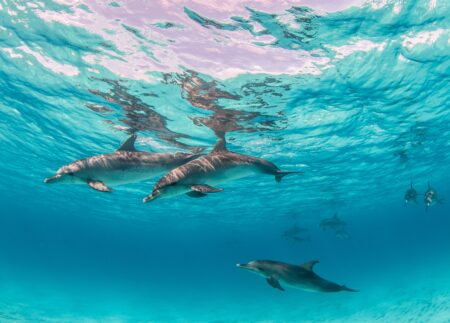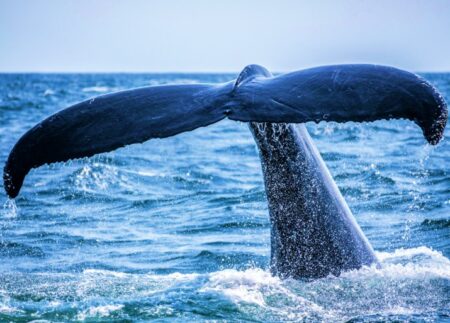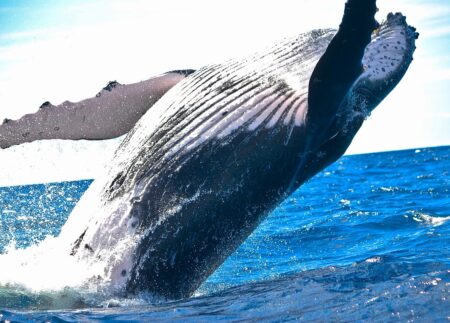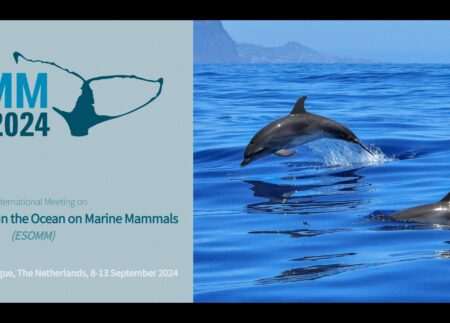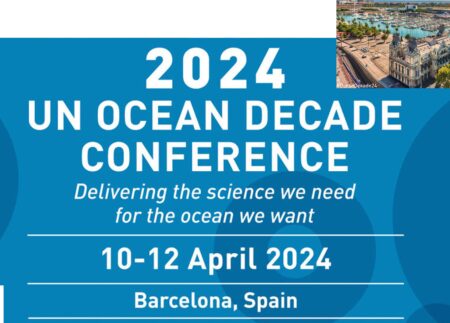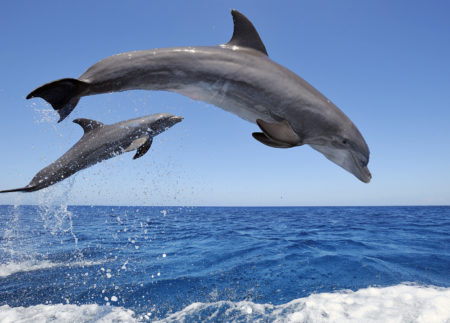THE SOUND & MARINE LIFE JOINT INDUSTRY PROGRAMME
The Joint Industry Programme (JIP) established in 2006 supports independent, peer-reviewed research to help increase understanding of the effect of sound on marine life, generated by offshore energy activities. This research provides better science, helping governments make regulatory decisions and industry develop effective mitigation strategies. Deliverables of the JIP can be found here.
SCROLL TO DIVE INTO THE ISSUEWEATHER
Weather is one of the principal sources of natural sound in the ocean. Wind is a constant contributor to ocean ambient noise and can vary from 30-85 dB re 1 μPa over the frequency range of 100 Hz-10 kHz. Storms in particular generate considerable sound above the wind-driven background noise of the oceans. Rain alone can raise the local ambient noise conditions by 50 dB. Thunder is a loud source that occurs in air, but can be heard underwater. A lightning strike at sea hitting the water can be up to 260 dB re 1 μPa. Marine mammals have evolved to be able to tolerate this level of background noise.
WIND TURBINE
Ref 5
Pile driving during the construction of offshore wind turbines generates underwater impulses that vary based on the pile and hammer type. Impulse peak pressures measured at 10 m from the source can range from 177-220 dB re 1 μPa.
PRODUCTION PLATFORM
DURING CONSTRUCTION
Ref 4
Underwater pile driving during the construction phase generates considerable underwater sound, but this falls considerably once the platform is in operation when most sound is generated above the water line.
SHIP TOWING SEISMIC ARRAY
Ref 3
Seismic surveys are vital to the oil and gas industry. They use sound to help understand the geology beneath the ocean floor and whether it is prospective for oil and gas. Seismic arrays are towed behind survey vessels and emit brief and focused pulses of sound waves (acoustic energy). The sound waves reflect off the different rock layers under the bed of the ocean.
These reflections are then detected by seismic sensors in the array and processed by powerful computers into a data set. Earth scientists then interpret the data to build up a geological picture of what lies beneath the ocean floor. As such seismic surveys help to define the limits of any drilling activity in the marine environment.
COMMERCIAL SHIPPING
Ref 6
Global product cargo transported by sea has risen 2.5 times between 2000 and 2013. In 2013 it stood at 500 billion Metric Tons. Commercial shipping is the largest man-made contribution to ambient sound in the ocean.
BOTTLENOSE DOLPHINS
Ref 7
Dolphins themselves generate sound both to communicate and to map their marine environment through natural sonar. The bottlenose dolphin can produce a localised echolocation click of 230 dB re 1 μPa which it uses as a hunting tool to find and sometimes stun fish. The JIP has pioneered new tracking tools to facilitate the study of marine mammals in the wild.
THE OCEAN
The ocean is filled with a wide variety of natural and anthropogenic sounds generated by shipping, and military sonar amongst others.
SEA TURTLES
The JIP conducted the first ever comprehensive study into the hearing of turtles over different life stages which will contribute to understanding the potential effects of E&P sound on this species.
SOUND IN THE SEA
Sound travels in different ways in this complex undersea environment and many factors influence what an animal hears.
SEALS
Seals are found in all oceans of the world. Ice seal species in the Arctic and Antarctic have had little exposure to man-made sound, and our research has expanded understanding of their hearing capabilities and behavioral responses.
THE SCIENCE
In 2006, a group of international oil and gas companies united their resources to found a research programme with focus on sound and marine life. The initial aim of this programme was to improve understanding of the potential physical and behavioural effects of sound generated by oil and gas exploration and production on different forms of marine life. Working together with multi-national groups, experts and NGOs, this JIP is the most extensive industry research programme in this field, which has already committed over US$ 55 million to research.
In 2024, the JIP’s vision is to enable healthy, resilient oceans. By increasing our knowledge of how the sound we generate interacts with the ocean ecosystems.
FISH
The JIP takes its responsibility to the fishing industry very seriously and has already conducted extensive investigations into the effects of seismic surveys on fish. In the third phase of its work, commencing in 2014, the JIP will extend the scope of this study to cover a wider variety of fish species.
BALEEN WHALES
188 dB re 1 μPa @1m
Ref 8
Baleen whales (including Humpback and Blue) use sounds to communicate in the ocean, and the call of a blue whale can travel for hundreds of miles. Very little is known about what these large whales can hear, and our research has contributed new knowledge to large whale hearing.
OUR RESEARCH
The JIP’s research is divided into five categories – from understanding how sound travels underwater, to the possible effects of sound on marine fauna’s physical and behavioural well-being, to how sound can be mitigated
COLLABORATION
Collaboration is one of the founding principles of the JIP. We have deliberately engaged world-leading scientists to guide our research and ensure that it conforms to the highest standards. The JIP engages with the international community of scientific experts and regulatory agencies. We work with world-leading Subject Matter Experts (SMEs) to guide and conduct independent research that conforms to the highest standards of project execution. The JIP ensures transparency and sharing of research findings of projects with SMEs publishing their work via peer-reviewed scientific publications and IOGP reports. Scientists must submit papers to scientific journals and release their data to the public.
INNOVATION
The JIP is working at the cutting edge of research and is pioneering mitigation tools.
The JIP has developed PAMGuard, a software system for detecting the presence of marine mammals near seismic operations that allows operators to shut down to prevent any over exposure. This system is now used worldwide.
NATURAL TECTONIC ACTIVITY
Ref 10
UNDERSEA EARTHQUAKE 255 dB re 1 μPa @1m
Ref 11
One of the largest generators of underwater sound is natural tectonic activity. Many of the world’s largest fault lines lie in the oceans.
Browse Our Library
The Database allows full flexibility to search for entries by, for example: research category, keyword/topic, organisation or author/Principal Investigator.
It provides access to Project Reports, Peer-Reviewed Publications, Factsheets, Videos and other outputs from JIP-funded, or co-funded, research.
